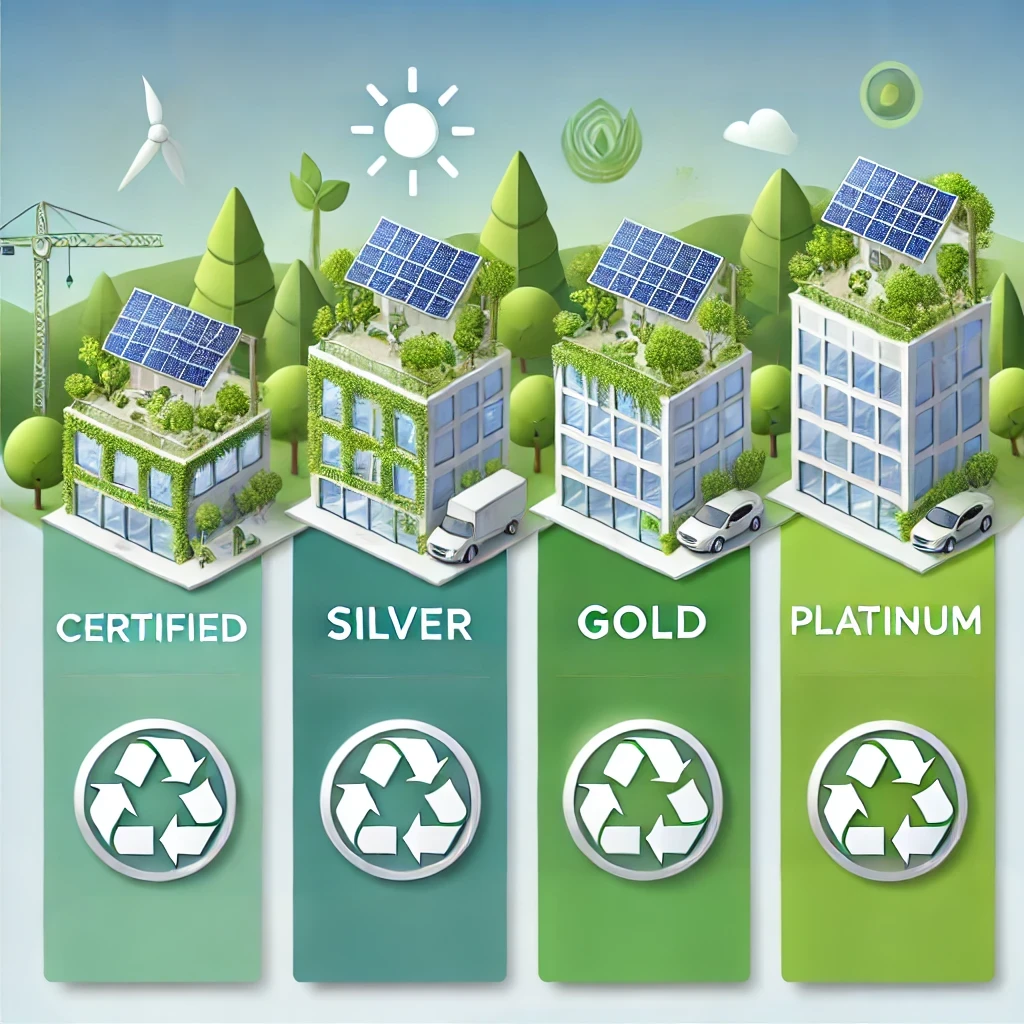LEED (Leadership in Energy and Environmental Design) is a globally recognized rating system that assesses the sustainability of buildings. Developed by the U.S. Green Building Council (USGBC), it encourages environmentally responsible design and construction by awarding points in various sustainability categories. Based on the total points accumulated, buildings achieve one of four LEED certification levels: Certified, Silver, Gold, and Platinum.
LEED Certification Levels and Point Ranges
| Certification Level | Point Range |
|---|---|
| Certified | 40–49 points |
| Silver | 50–59 points |
| Gold | 60–79 points |
| Platinum | 80+ points |
To earn LEED certification, projects must meet mandatory prerequisites and accumulate points in areas such as energy efficiency, water conservation, material selection, and indoor environmental quality. Each certification level represents a higher standard of sustainability, delivering both environmental and financial benefits.
LEED Certification Levels Explained
1. LEED Certified (40-49 Points)
The Certified level signifies that a project meets the essential sustainability requirements. While it improves resource efficiency, it may not significantly surpass conventional building performance. LEED Certified buildings typically:
Reduce energy consumption moderately.
Improve water efficiency.
Incorporate some sustainable materials.
This entry-level certification helps projects align with basic green building principles while ensuring compliance with sustainability standards.
2. LEED Silver (50-59 Points)
LEED Silver certification goes beyond the basics, requiring additional strategies for enhanced building performance. Silver-certified projects:
Consume less energy and water compared to non-certified buildings.
Implement better waste management practices.
Improve indoor air quality, contributing to occupant health and well-being.
This level is popular among businesses and developers looking for cost-effective sustainability strategies and a competitive market edge.
3. LEED Gold (60-79 Points)
LEED Gold certification is awarded to projects that demonstrate advanced sustainability practices. Gold-certified buildings:
Effectively integrate renewable energy sources.
Prioritize the use of recycled and eco-friendly materials.
Enhance occupant health through superior indoor environmental quality.
This certification level is highly valued in real estate and construction due to its environmental impact and economic advantages, making it a preferred choice for companies committed to sustainability.
4. LEED Platinum (80+ Points)
LEED Platinum is the highest and most prestigious level of certification, recognizing projects that lead in sustainability, efficiency, and innovation. Platinum-certified buildings:
Achieve maximum energy efficiency and reduce operational costs.
Significantly lower carbon footprint through renewable energy and sustainable materials.
Utilize cutting-edge water conservation strategies.
Earn additional points through innovation and regional priority credits.
Platinum-certified buildings set the global benchmark for green construction, often commanding higher market value, international recognition, and long-term operational savings.
Why Are LEED Certification Levels Important?
A building’s LEED certification level directly affects its environmental footprint, operational efficiency, and overall market value. Higher certification levels provide greater energy savings, improved indoor air quality, and financial benefits.
Higher energy and water efficiency reduce utility costs.
Better indoor air quality enhances occupant well-being.
Lower operating expenses improve long-term savings.
Reduced environmental impact supports global sustainability goals.
Increased property value strengthens market competitiveness.
By promoting sustainable construction and operational practices, LEED certification not only benefits the environment but also provides financial and strategic advantages for property owners and developers. Investing in LEED-certified buildings ensures long-term profitability, efficiency, and global recognition.

